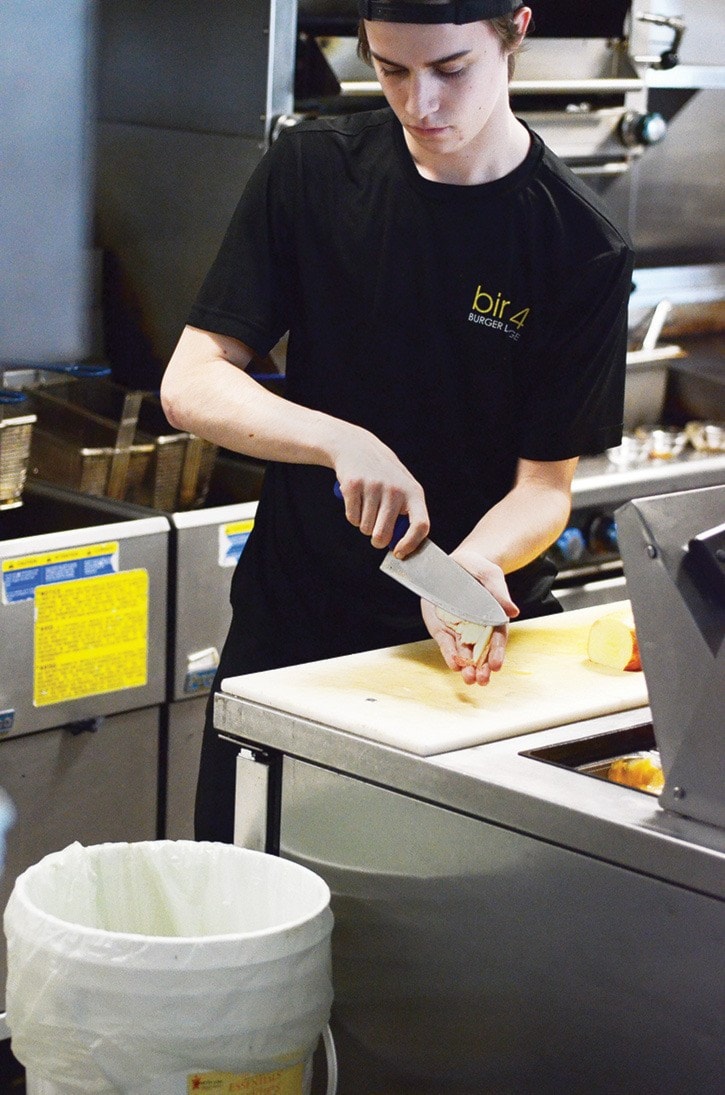An Island solution for regional kitchen scraps is on hold while Capital Regional District directors wait to discover if processing organics and sewage waste at a single facility is feasible.
Hartland landfill banned all organic waste at the beginning of 2015, which spurred the CRD board last fall to look to “establish a processing society in the region or in proximity to the region.”
Alpine Disposal and Recycling has an extensive kitchen scrap pick-up service on the West Shore, and Heather Baumann, Alpine’s office manager, says they definitely drop the kitchen scraps they collect at Hartland Landfill. After that, she says, they don’t know what happens to them.
It turns out the organic waste from the West Shore, along with that of the rest of the region – except Saanich, whose organic waste continues to be trucked to Cobble Hill each week for processing – is currently being barged to Richmond.
According to CRD spokesperson Andy Orr, Hartland Landfill is still accepting the organic waste, but is merely acting as a transfer station for the region’s organics. Kitchen scraps are received there before being barged to Harvest Energy in Richmond, where they are used in energy production.
“The process of getting a local facility has been bogged down by the whole sewage discussion,” he said. “Some people think it might be good to integrate those concepts together, so that’s where we’re at right now. Figuring out a way that might happen.”
Last fall, the CRD put out a request for proposals for a regional kitchen scraps site and facility and have since received 15 proposals. But on March 11, CRD staff suggested a “pause on the process” until a market sounding on available technology for sewage processing – with potential integration of kitchen scraps – is completed in May.
Staff expect the latest market sounding – put forward by Saanich Coun. Vic Derman multiple times over the years before it was successfully passed – to look at how residual solids from liquid waste could be integrated, treated and harvested for energy in combination with kitchen scraps.
Central Saanich has experienced firsthand the issue of biosolids processing on farmland. Foul smells caused the CRD to pull the food scraps licence for Foundation Organics in 2013, but the facility has since been permitted to process yard waste only.
Central Saanich Mayor Ryan Windsor said he’s worried the diversion of kitchen scraps to off-shore locations will continue for years if a solution is wrapped up in a sewage treatment facility.
“It’s fairly obvious when the proposal of combining biosolids with other scraps and creating a soil … the community responds in a way that is not positive, to put it lightly,” he said. “But I’ll wait to see the report back in a couple months.”
It’s a stance the CRD, too, has taken in the past, vowing not to allow biosolids processing on land. CRD board chair and Oak Bay Mayor Nils Jensen said it would be a collision of policies to change now.
“Before we can even consider that, we would have to go back and revisit a policy which was already revisited twice.”
Once a sewage market sounding is complete, the next step for organics processing would be a short-listing of proposals. CRD staff presume a couple of months is a reasonable timeline with which to respond to the 15 groups that submitted proposals.
– with files from Daniel Palmer
mdavies@goldstreamgazette.com
